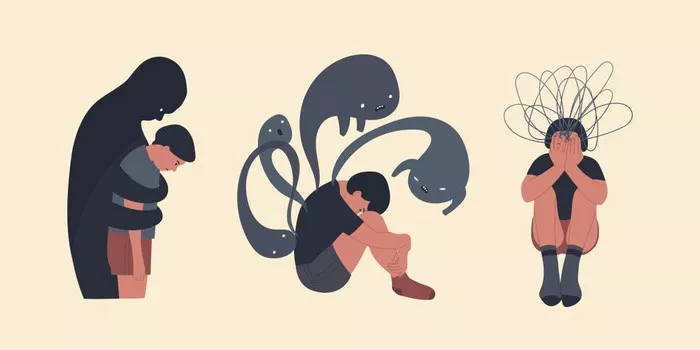Mental illness is a significant public health concern, affecting millions of individuals worldwide. While awareness of mental health issues has increased in recent years, many people still do not receive adequate treatment for their conditions. In this comprehensive article, we delve into the prevalence of untreated mental illnesses, the barriers to treatment, and the potential consequences of leaving these conditions untreated.
The Scope of the Problem
Untreated mental illness is a pervasive issue that affects individuals, families, and communities across the globe. Despite advances in mental health awareness and treatment options, a significant proportion of individuals with mental health disorders do not receive the care they need. This untreated epidemic has far-reaching implications for public health, productivity, and quality of life.
Global Impact
Untreated mental illnesses contribute to a substantial burden of disease globally, with significant economic, social, and human costs. According to the World Health Organization (WHO), mental disorders account for a significant portion of the global burden of disease, with depression alone being the leading cause of disability worldwide.
Prevalence Rates
While estimates vary by region and population, studies consistently indicate that a large proportion of individuals with mental health disorders do not receive treatment. The Treatment Advocacy Center reports that in the United States, approximately half of individuals with serious mental illnesses receive no treatment in any given year.
Barriers to Treatment
Several factors contribute to the high rates of untreated mental illness, including:
Stigma and Discrimination
Stigma surrounding mental illness remains a pervasive barrier to seeking help. Fear of judgment, discrimination, or social repercussions may prevent individuals from disclosing their symptoms or seeking treatment.
Lack of Access to Care
Limited access to mental health services, particularly in underserved or rural areas, can hinder individuals’ ability to obtain timely and appropriate care. Structural barriers such as long wait times, high costs, and insurance limitations may further exacerbate disparities in access to treatment.
Misdiagnosis or Underdiagnosis
Misdiagnosis or underdiagnosis of mental health disorders can result in individuals not receiving the appropriate treatment for their condition. This may occur due to lack of awareness or training among healthcare providers, as well as overlapping symptoms with other medical or psychiatric conditions.
Mistrust of Healthcare System
Historical and systemic injustices, as well as experiences of discrimination or maltreatment within the healthcare system, may lead to mistrust among certain communities or populations. This mistrust can deter individuals from seeking help or adhering to treatment recommendations.
Cultural and Linguistic Barriers
Cultural beliefs, language barriers, and lack of culturally competent care can pose significant challenges to accessing mental health services for diverse populations. Cultural stigma surrounding mental illness may also influence individuals’ willingness to seek help.
Consequences of Untreated Mental Illness
The failure to address mental health issues has profound consequences for individuals, families, and society as a whole:
Poorer Health Outcomes
Untreated mental illness is associated with poorer physical health outcomes, including increased risk of chronic medical conditions such as cardiovascular disease, diabetes, and obesity. Mental health disorders can also exacerbate existing health conditions and complicate treatment regimens.
Impaired Functioning
Untreated mental illness can impair individuals’ ability to function in various areas of life, including work, school, relationships, and daily activities. Symptoms such as depression, anxiety, or psychosis can interfere with cognitive functioning, decision-making, and social interactions.
Increased Risk of Suicide
Untreated mental illness is a significant risk factor for suicide. Individuals with untreated depression, bipolar disorder, schizophrenia, or other serious mental illnesses are at heightened risk of suicidal ideation, attempts, and completed suicides.
Financial Costs
Untreated mental illness imposes substantial economic costs on society, including lost productivity, increased healthcare utilization, and higher rates of disability and unemployment. The economic burden of untreated mental illness extends beyond healthcare costs to include indirect costs such as reduced workforce participation and absenteeism.
Social Isolation and Stigma
Untreated mental illness can contribute to social isolation, alienation, and stigma, as individuals may withdraw from social interactions or face discrimination due to their symptoms. The stigma surrounding mental illness can further perpetuate feelings of shame, guilt, or self-blame.
Addressing the Treatment Gap
Closing the treatment gap for mental illness requires a multifaceted approach that addresses barriers at individual, community, and systemic levels:
Promoting Mental Health Literacy
Increasing awareness and understanding of mental health issues can help reduce stigma, increase help-seeking behavior, and improve access to care. Education initiatives aimed at raising mental health literacy among the general public, healthcare providers, and policymakers are essential.
Expanding Access to Care
Investing in mental health services and expanding access to care, particularly in underserved communities, is crucial for addressing disparities in treatment. This includes increasing the availability of culturally competent services, telehealth options, and community-based interventions.
Enhancing Provider Training
Providing comprehensive training for healthcare providers in the identification, assessment, and treatment of mental health disorders can improve diagnostic accuracy and ensure that individuals receive appropriate care. Continuing education programs and interdisciplinary collaboration are essential for promoting best practices in mental health care.
Combatting Stigma
Efforts to combat stigma and discrimination surrounding mental illness are essential for creating supportive environments that encourage help-seeking behavior and promote social inclusion. Media campaigns, advocacy initiatives, and community engagement efforts can challenge stereotypes and promote positive attitudes toward mental health.
Integrating Mental Health Services
Integrating mental health services into primary care settings and other healthcare settings can improve access to care and facilitate early intervention for individuals with mental health needs. Collaborative care models that involve interdisciplinary teams can enhance coordination of services and support holistic approaches to treatment.
Conclusion: A Call to Action
Untreated mental illness represents a significant public health challenge with far-reaching implications for individuals, families, and society. By addressing barriers to treatment, increasing awareness, and promoting access to care, we can work towards closing the treatment gap and improving outcomes for those affected by mental health disorders. It is imperative that policymakers, healthcare providers, advocacy organizations, and communities come together to prioritize mental health and implement strategies that support early intervention, equitable access to care, and destigmatization of mental illness. By taking collective action, we can build a more inclusive and supportive society where all individuals have the opportunity to thrive.
































